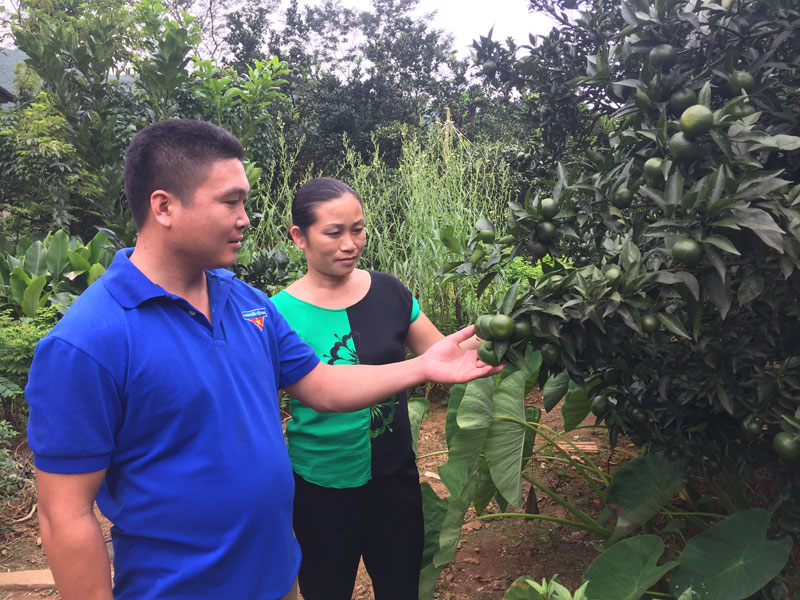


Cao Son commune’s per capita income now stands at 22.6 million VND per year, while its rate of poor households is 36 percent, and its proportion of near-poor families is 25.51 percent. Therefore, local authorities are working to raise income of people and promote the commune’s socio-economic development.

Cadres of Cao Son commune (Da Bac district) share experiences in growing citrus fruits with the family of Dinh Thi Guong in Na Chieu hamlet.
According to statistics, the commune has expanded plantation area for key crops such as maize by 550 ha and of cannaceae by 350 ha. Citrus fruits are cultivated on 130 ha, of which more than 40 ha are used for commercial purpose. The locality maintains its herd of cattle and poultry at over 17,000 heads. Industrial and craft production has received significant attention from the local authorities. The entire commune has 100 production and business establishments, focusing on processing cannaceae, and producing construction materials and wooden products.
We visited the family of Dinh Thi Guong in Na Chieu hamlet, a pioneer in growing citrus fruits in the commune. To date, her citrus fruit garden has been expanded to more than 6,000 sq. m with 400 orange trees. In 2017, her family sold 10 million tonnes of fruits and earned nearly 300 million VND. Merchants to her garden were mainly from Hanoi and nearby areas.
To help needy households get access to preferential loans, Cao Son commune has got the mandate from the Vietnam Bank for Social Policies and the Vietnam Bank for Agriculture and Rural Development, with total outstanding loans reaching 57 billion VND. Every year, the local social education centre works with relevant organisations and sectors to hold 3 – 4 training sessions on farming for local farmers.